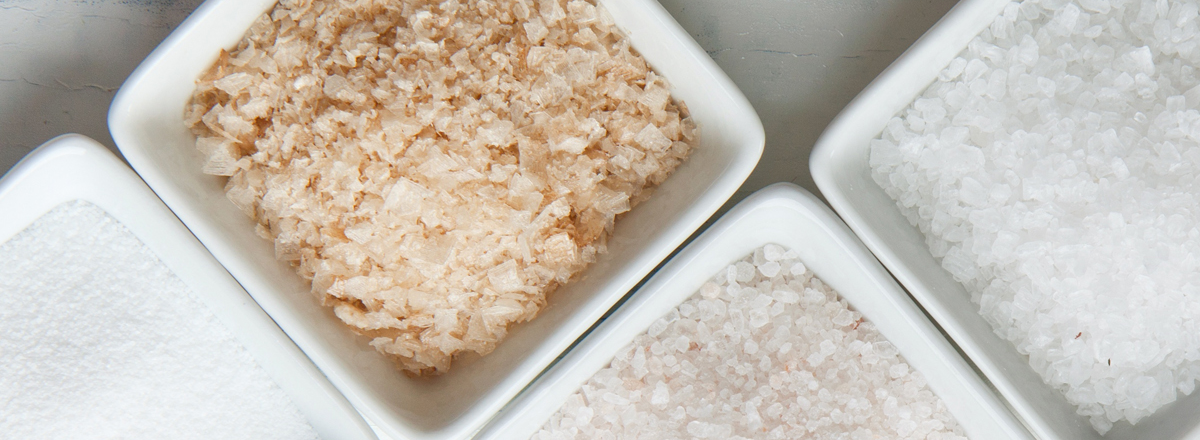By Stephen T. Sinatra, M.D., F.A.C.C., F.A.C.N., C.N.S., C.B.T.
Should you cut out or cut down on salt? Medical students are always taught you should limit salt intake because salt is (literally) full of sodium, too much of which can threaten heart health. This one-recommendation-fits-all concept is the subject of a never-ending medical debate: how much sodium is too much?
Myth: You can protect yourself by eating no salt or less than 1,500 mg salt per day.
Fact: Moderation, not avoidance, is the solution. Your body needs some salt!
My Recommendation: Read labels. Keep your salt intake to 2-3 grams daily. Do cut down on the amount of processed food you eat. That’s where you can run up your sodium intake…and fast!
I’ve seen a lot of conflicting reports over the years and long ago became skeptical about reducing sodium too much. After all, we are electrical beings, and we need sodium to help conduct impulses throughout the body.
Multiple randomized trials have produced conflicting conclusions about whether reducing sodium truly lowers a person’s risk of cardiovascular disease. So the enduring question remains, how much sodium is too much, how much is too little? There is no clear answer yet.
The general recommendation in the U.S. for sodium intake has been 2.3 g (about a teaspoon) a day, and 1.5 g if you are over 50; this echoed the American Heart Association (AHA)’s position until recently, when the AHA changed its recommendation to less than 1.5 grams for all adults. Problem is, three major heart failure studies show that less than 1.8 g significantly increases morbidity and mortality compared with individuals who take 2.8 g.
A comprehensive 2012 research review of salt intake and cardiovascular events cites the conflicted outcomes in major studies involving more than 360,000 subjects. Too little sodium leads to increased plasma rennin activity (a measurement of the enzyme rennin’s ability to regulate blood pressure and sodium/potassium ratio), insulin resistance, sympathetic nerve activity, and triglycerides. One of the studies cited in the review was a trial involving retired Taiwanese men. It showed that an average intake of 3.8 g improved survival compared to 5.3 g.
The authors of the salt review, from Albert Einstein College of Medicine in New York, said that there is no evidence for universal reduction of sodium intake. What’s really needed, they said, are very rigorous, large-scale randomized trials involving thousands of people that could help resolve this confusing question. I second the motion.
Know Your High and Low Sodium Foods to Find that Sodium “Sweet Spot”
How Much Sodium is Okay?
As mentioned above, I recommend keeping your sodium intake at around 2-3 g daily – read labels. In my clinical practice, I saw patients over the years who restricted their sodium intake so much that they developed fatigue. I’ve always suggested a pinch of salt in a little bit of water is good for everybody, including heart failure patients, and specifically in the form of Himalayan, or some good version of sea salt like Sel Gris, which doesn’t contain anti-caking agents that are in standard processed table salts, and also still contains minerals that are important for health (many of which get stripped from table salt during processing). Both types of salts – unprocessed and processed – contain the same amount of sodium.
One non-debatable fact is that most sodium intake comes from processed foods overloaded with salt, and you can easily and quickly exceed healthy levels. Among the most overloaded salty items are fast foods, soy sauces, salad dressings, bacon, sausage and sandwich meats, snacks, salted nuts, pickled foods, and soups, broths and gravies.
The best way to achieve that 2-3 gram sodium sweet spot is to adopt a high vibrational, anti-inflammatory diet, like my PAMM (Pan-Asian-Modified-Mediterranean) Diet. You won’t find processed foods in this diet… just lots of fresh, colorful vegetables, fruits and legumes (beans, chickpeas, lentils, and peas), some quality proteins like organic chicken or Wild Alaskan salmon, and plenty of healthy fats like olive oil, avocado and (unsalted) nuts. Adding spices, pepper, and a little natural salt over them can enhance and enliven their flavor in a way that will leave you wondering, how could healthy food taste so delicious?
I’m passionate about healthy eating and want you to enjoy healthy eating too. That’s why I recently developed my signature line of high vibrational seasonings, and am offering them at Vervana.com. My salt blend is a trio of different types of salts from around the world, including Himalayan salt, Pacific sea salt, and French sel gris – try it (in moderation) and I guarantee, your taste buds and heart won’t regret it!
References:
- Wikipedia. Bioelectromagnetics.
- American Heart Association. Shaking the Salt Habit to Lower High Blood Pressure. Dec 13, 2016.
- Fantar S. List of Minerals in Sea Salt. SFGATE. com.
- Alderman MH, Cohen HW. Dietary sodium intake and cardiovascular mortality: controversy resolved? Am J Hypertension, 2012;25(7):727–34.
- American Heart Association (AHA). Sodium and Salt. Heart.org.
© 2014, 2017, 2019 HeartMD Institute. All rights reserved.










